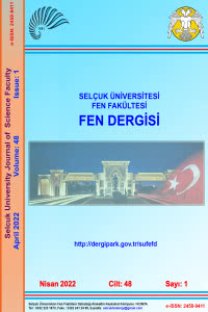BEARING CAPACITY and BULGING BEHAVIOR of GEOGRID ENCASED STONE COLUMNS
Geogrid Kaplı Taş Kolonların Taşıma Kapasitesi ve Genişleme Davranışı
___
- Ambily, A. P., Gandhi, S. R., 2007, "Behavior of stone columns based on experimental and FEM analysis", Journal of geotechnical and geoenvironmental engineering, 133(4), 405-415.
- Andreou, P., Frikha, W., Frank, R., Canou, J., Papadopoulos, V., Dupla, J. C., 2008, "Experimental study on sand and gravel columns in clay", Proceedings of the ICE-Ground Improvement, 161(4), 189- 198.
- Ayadat, T., Hanna, A. M., 2005, "Encapsulated stone columns as a soil improvement technique for collapsible soil", Proceedings of the ICE-Ground Improvement, 9(4), 137-147.
- Balaam, N. P., Poulos, H. G., Brown, P. T., 1978, "Settlement analysis of soft clays reinforced with granular piles", Proc., 5th Asian Conf. on Soil Engineering, Bangkok, Thailand, 81-92.
- Barksdale, R.D., Bachus, R.C., 1983, "Design and construction of stone columns: Final report" SCEGIT- 83-104. Federal Highway Administration, Washington D.C.
- Bauer G.E., Nabil Al-Joulani, 1996, "Laboratory and analytical ınvestigation of sleeve reinforced stone columns", Geosynthetics: application, design and construction, 463-466.
- Black, J. A., Sivakumar, V., Madhav, M. R., Hamill, G. A., 2007, "Reinforced stone columns in weak deposits: laboratory model study", Journal of Geotechnical and Geoenvironmental Engineering, 133(9), 1154-1161.
- Brinkgreve, R. B. J., Broere, W., Waterman, D., 2004, "Plaxis finite element code for soil and rock analysis", 2D -Version 8.6.
- Demir, A., Ok, B., 2015, "Uplift response of multi-plate helical anchors in cohesive soil", Geomechanics and Engineering, 8(4), 615-630.
- Engelhardt, K., Golding, H. C., 1975, "Field testing to evaluate stone column performance in a seismic area", Geotechnique, 25(1), 61-69.
- Isaac, D. S., Girish, M. S., 2009, "Suitability of different materials for stone column construction", EJGE, 14, 2-12. ISO 690
- Katti, R.K., Katti, A.R, Naik, S., 1993, "Monograph to analysis of stone columns with and without geosynthetic encasing", CBRI publication, New Delhi.
- Kempfert, H. G., 2003, "Ground improvement methods with special emphasis on column-type techniques", In Proceedings, international workshop on geotechnics of soft soils--theory and practice (pp. 101-112).
- Keykhosropur, L., Soroush, A., Imam, R., 2012, "3D numerical analyses of geosynthetic encased stone columns", Geotextiles and Geomembranes, 35, 61-68.
- Laman, M., Yildiz, A., 2007, "Numerical studies of ring foundations on geogrid-reinforced sand", Geosynthetics International 14 (2), 1-13.
- Malarvizhi, S. N., Ilamparuthi, K., 2008, "Numerical analysis of encapsulated stone columns", In 12th International Conference of International Association for Computer Methods and Advances in Geomechanics, Goa, India (pp. 3719-3726).
- Priebe, H. J., 1995, "The design of vibro replacement", Ground engineering, 28(10), 31.
- Sarıcı T., Demir A., Altay G., Laman M., Ok B., Bağrıaçık B., 2013, "Yumuşak Kil İçindeki Taş Kolonun Küçük Ölçekli Model Deneyler İle Değerlendirilmesi", 5. Geoteknik Sempozyumu 5-7 Aralık 2013, Çukurova Üniversitesi, Adana
- Wehr, J., 2006, "The undrained cohesion of the soil as criterion for the column installation with a depth vibrator", In: Proceedings of the International Symposium on Vibratory Pile Driving and Deep Soil Vibratory Compaction. TRANSVIB, Paris, pp. 157e162
- Watts, K. S., Johnston, D., Wood, L. A., Saadi, A., 2000, "An instrumented trail of vibro ground treatment supporting strip foundations in a variable fill", Geotechnique, 50 6, 699-708.
- ISSN: 2147-9364
- Yayın Aralığı: 2
- Başlangıç: 2013
- Yayıncı: Selçuk Üniversitesi Mühendislik Fakültesi
ATM NAKİT İKMAL OPTİMİZASYONUNDA ASİMETRİK DESTEK VEKTÖR REGRESYON TAHMİN MODELİ YAKLAŞIMI
Özge TUĞRUL SÖNMEZ, C Erhan BOZDAĞ
BEARING CAPACITY and BULGING BEHAVIOR of GEOGRID ENCASED STONE COLUMNS
Hurşit Sefa AYDIN, VOLKAN KALEM
UML İLE SANAL KAMPÜS MODELLEMESİ
SAİT ALİ UYMAZ, Şirzat KAHRAMANLI
PARAVALVULAR KAÇAKLI MEKANİK KALP KAPAK SES SİNYALLERİNİN AYRIK DALGACIK DÖNÜŞÜMÜYLE İNCELENMESİ
AN OVERVIEW OF SOFTWARE DEFINED CAMPUS NETWORKS
